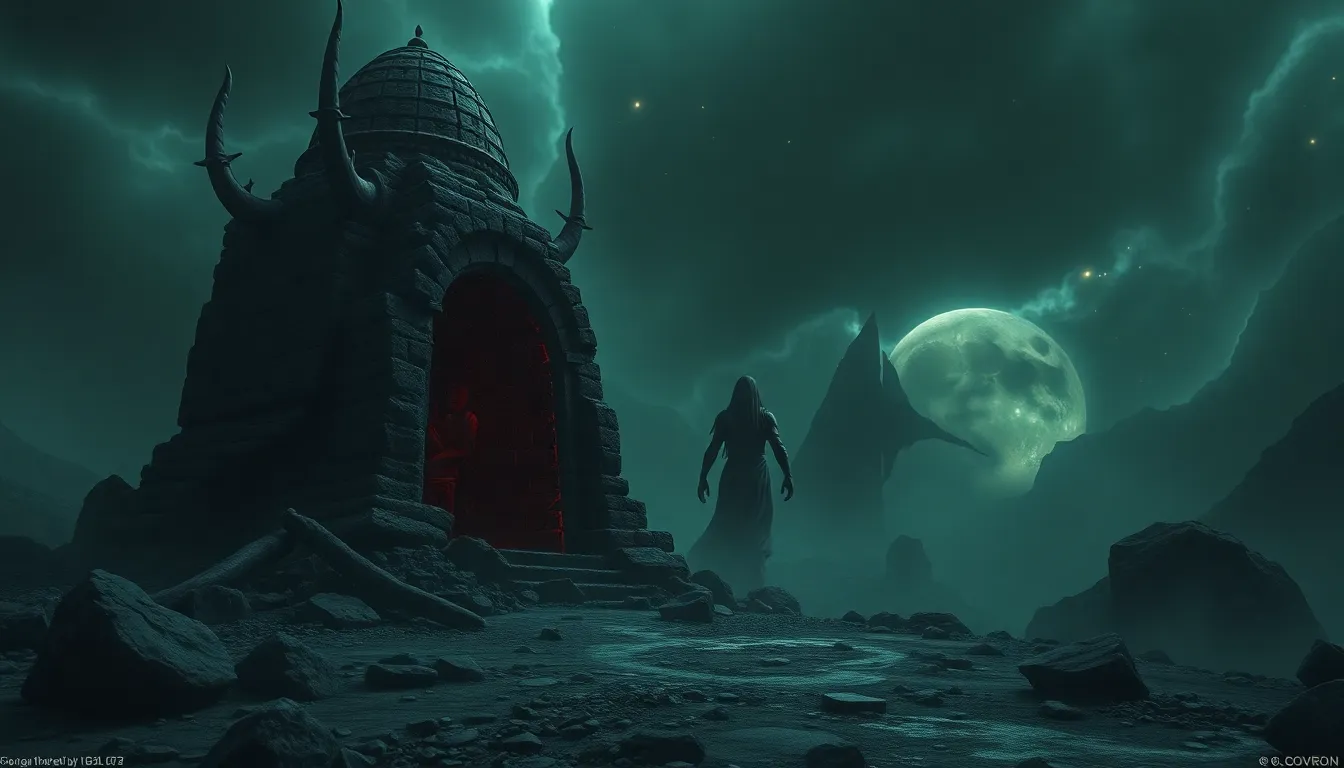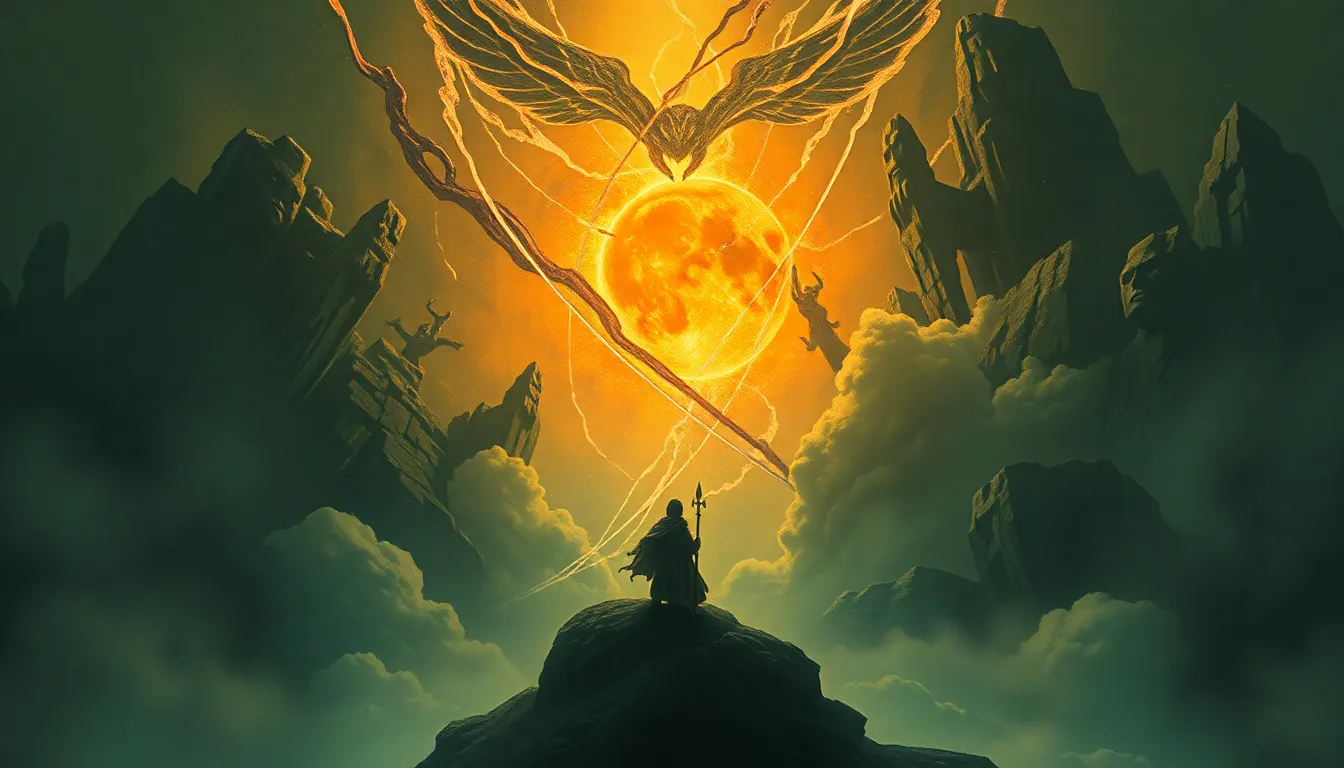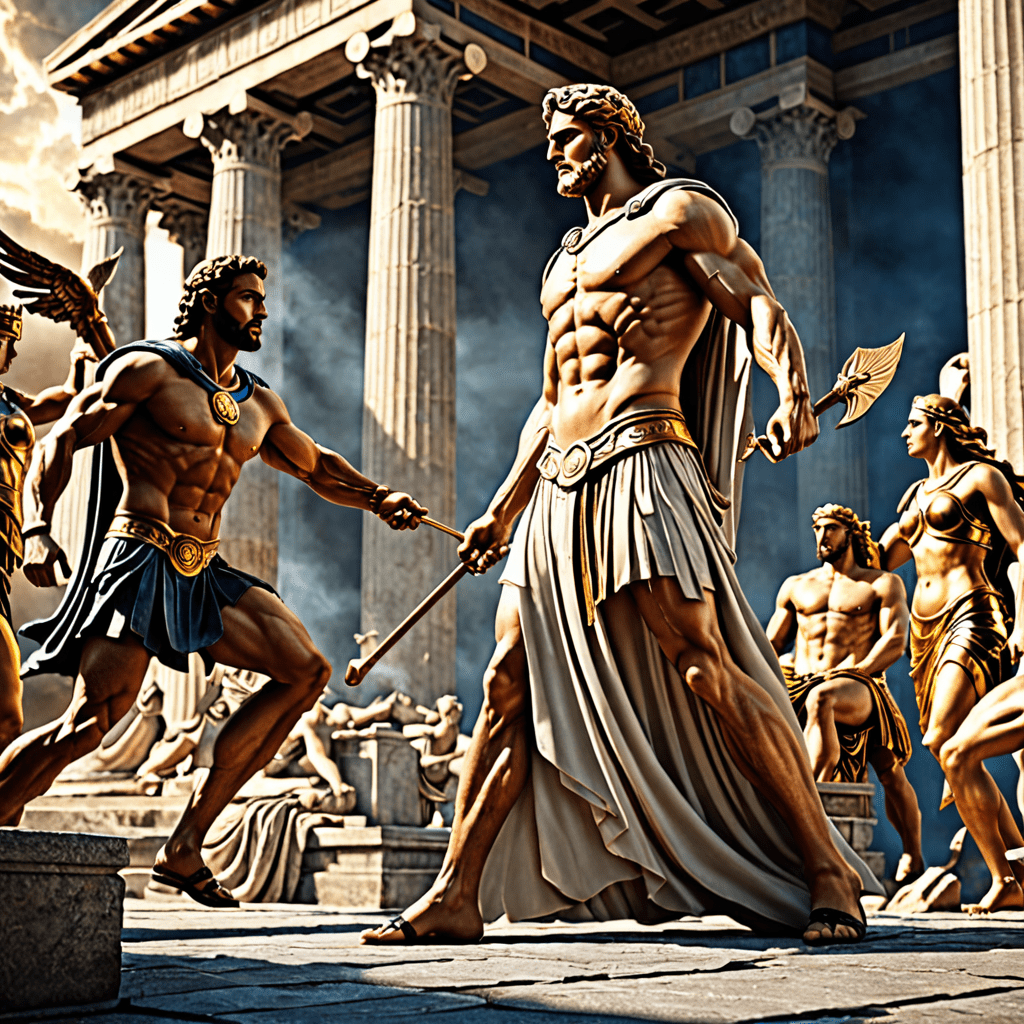The Myth of Matsya Avatar: The Fish Incarnation of Vishnu
I. Introduction
In the vast tapestry of Hindu mythology, the Matsya Avatar, or the Fish Incarnation of Vishnu, holds a prominent place. It is a captivating tale that speaks of Vishnu's boundless compassion and his role as the preserver of creation. This myth has been narrated for centuries, captivating the hearts and minds of devotees, and its significance continues to linger in contemporary religious and cultural practices.
II. The Origins of the Matsya Avatar Myth
The Matsya Avatar myth finds its roots in the ancient Vedic scriptures, primarily in the Matsya Purana and the Bhagavata Purana. These texts narrate the story of a time when the world was plunged into darkness and chaos by the demon Hayagriva. Hayagriva, with his insatiable desire for power, stole the Vedas, the sacred texts of knowledge and wisdom, from Brahma, the creator god. This plunged the world into turmoil, leaving humanity and the gods devoid of guidance and direction.
III. The Setting of the Matsya Avatar Story
The myth unfolds in Satya Yuga, the first and most pristine of the four ages of creation. The story is set in a time when the earth was still young, and the oceans were vast and untamed. It was a time of great upheaval and cosmic disarray, as the forces of darkness threatened to engulf the world.
IV. The Incarnation of Vishnu as a Fish
In the face of such adversity, the gods turned to Vishnu for salvation. Vishnu, the supreme preserver, heard their pleas and descended to earth in the form of a colossal fish named Matsya. Matsya was no ordinary fish; it possessed immense power and wisdom, and its presence brought hope to the gods and all living beings.
V. The Cosmic Deluge and the Preservation of Life
As the story progresses, a catastrophic flood threatens to destroy the world. The demon Hayagriva, still in possession of the stolen Vedas, unleashes his wrath upon the earth, causing torrential rains and violent storms. The raging waters surge and engulf the entire world, submerging mountains and valleys alike. Yet, amidst this chaos, Matsya remained a beacon of hope.
VI. The Rescue of the Seven Sages
As the floodwaters rose, the seven sages, known as the Saptarishis, who possessed the wisdom of the Vedas, sought refuge on the summit of Mount Meru. Matsya, guided by divine intuition, approached the mountain and inquired about the welfare of the sages. Recognizing Matsya's divine nature, the sages sought his protection, and he instructed them to build a boat.
VII. The Creation of Manu's Boat
Manu, the progenitor of humanity, was approached by Matsya, who tasked him with building a vast boat that would accommodate all living beings and protect them from the impending deluge. Guided by divine instructions, Manu constructed a colossal boat, large enough to encompass all species, along with the seven sages and the Vedas they safeguarded.
VIII. The Binding of the Boat to Matsya's Horn
As the flood intensified, Matsya instructed Manu to bind the boat to his horn using the serpent Vasuki as a rope. With the boat securely fastened, Matsya began to navigate the turbulent waters, towing the vessel and its occupants through the raging storm.
IX. The Destruction of the Demons and the Renewal of the World
While Matsya navigated the boat through the deluge, Hayagriva and his demonic followers emerged from the depths, posing a grave threat to the safety of the passengers. A fierce battle ensued, with Vishnu, in his Matsya Avatar, vanquishing the demons and restoring balance to the world. Once the demons were defeated, the floodwaters subsided, and life began anew.
X. Conclusion: The Significance of the Matsya Avatar Myth
The Matsya Avatar myth holds profound significance in Hindu mythology. It represents Vishnu's boundless compassion and his role as the preserver of creation. The story encapsulates the victory of good over evil and the triumph of hope over despair. It also symbolizes the cyclical nature of existence, as the destruction of the old world makes way for the creation of a new one. The myth serves as a reminder of Vishnu's unwavering protection and his presence in even the most turbulent times.
FAQ
What is the significance of the fish as an incarnation of Vishnu?
The fish symbolizes life, fertility, and adaptability in Hindu mythology. Vishnu's Matsya Avatar represents his ability to sustain and protect life even in the face of adversity.
Why did Vishnu need to incarnate as a fish?
The demon Hayagriva had stolen the Vedas, plunging the world into darkness. Vishnu descended as Matsya to retrieve the Vedas and restore balance to creation.
What is the relevance of the flood in the Matsya Avatar myth?
The flood represents the cyclical nature of existence and the destruction of evil to make way for a new beginning.
Who did Matsya save in his Avatar form?
Matsya saved Manu, the seven sages, and all living beings from the flood. He also retrieved the stolen Vedas and restored knowledge to the world.
What is the message conveyed by the Matsya Avatar myth?
The myth conveys the message that even in the most chaotic and challenging times, there is hope and that Vishnu's protection is always present.




